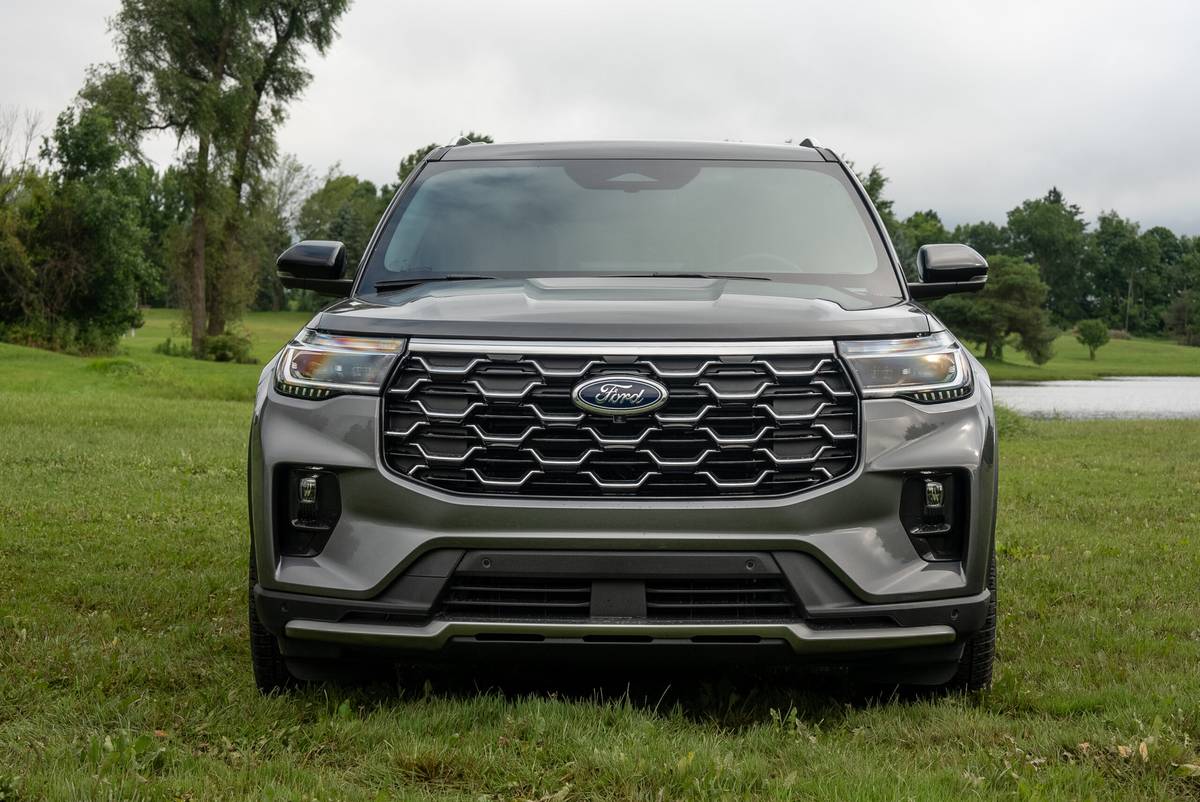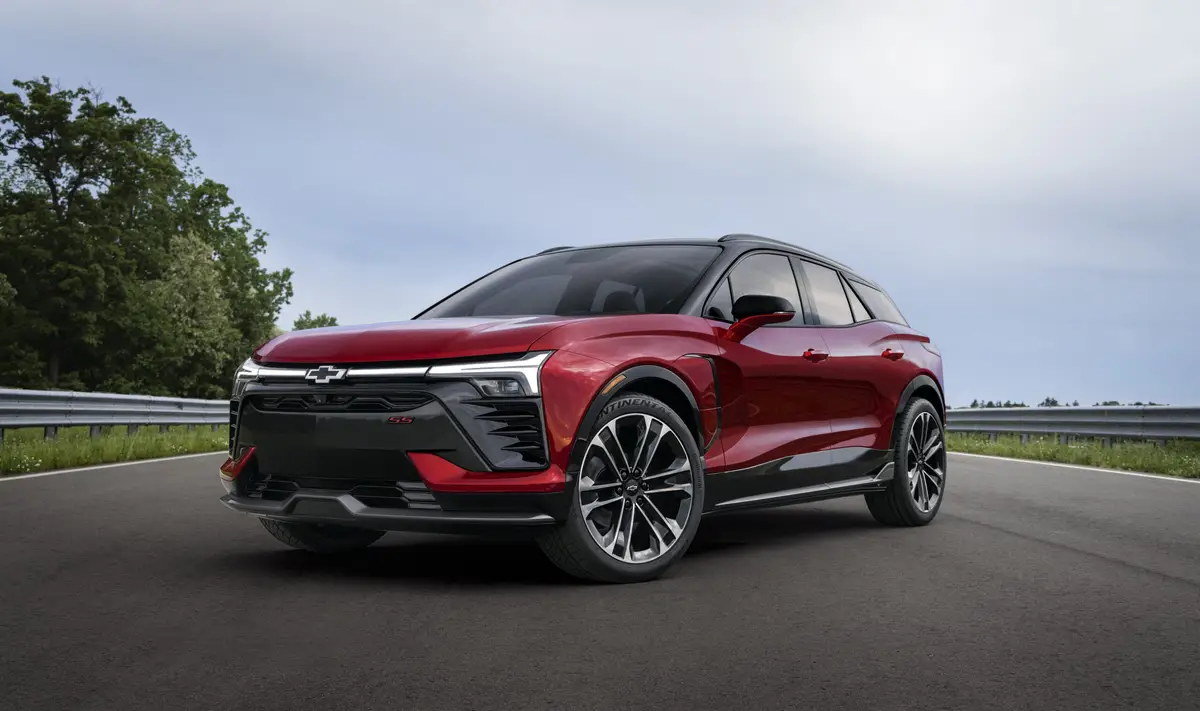2002 Jeep Liberty: What's New
Vehicle Overview
After 18 years on the market, the venerable Jeep Cherokee had been showing its age. Sales of the long-lived compact sport utility vehicle remained strong, but the new century demands a new model. So the Jeep division of DaimlerChrysler created the Liberty as the Cherokees replacement. Built at a new plant in Toledo, Ohio, the Liberty is claimed to be the stiffest Jeep ever 45 percent better in bending than the Cherokee and 30 percent improved in torsional rigidity. Its also the first Jeep with rack-and-pinion steering and a new independent front suspension. The automaker promises 8 inches of front and rear suspension travel.
First seen in January 2001 at Detroits North American International Auto Show, the Liberty is a bit bigger than the Cherokee and uses uniframe construction. Sport and Limited Edition models, the latter of which comes with V-6 power, have been on sale since late spring 2001. Hoping to attract a whole new kind of Jeep buyer without losing the traditional hard-core enthusiasts, Jeep General Manager Tom Sidlik called the 2002 Liberty a new Jeep for a new adventure. Rivals include the Ford Escape, Honda CR-V, Nissan Xterra and Toyota RAV4.
Exterior
Styling evolved from two concept vehicles created by the Chrysler design staff: the 1997 Dakar and the 1998 Jeepster. Because the Dakar was perceived as a four-door Wrangler, its upright profile was adapted to the new production model. Pronounced trapezoidal wheel flares are integrated into the body, and a traditional Jeep seven-slot grille is installed. Making the vehicle lower in front and higher at the rear is intended to impart a sense of forward motion. Short front and rear overhangs allow 38 degree approach and 32 degree departure angles for effective off-roading, which is Jeeps traditional skill. The taillights make a statement with their bug-eyed appearance, said Product Design Director Ralph Giles, and the headlights are elliptically shaped.
Riding a 104.3-inch wheelbase, the Liberty measures 174.7 inches long overall and stands 70.7 inches tall. The spare tire is mounted externally on an innovative swing-out tailgate with flipper glass thats said to ease access to the cargo area. Sport models get contrasting (molded-in-color) fascias, fender flares and bodyside moldings, while the Limited Edition has a monochromatic appearance and standard fog lamps. Tires are 16-inchers; aluminum wheels equip the Limited Edition. Available skid plates cover the fuel tank and transfer case, and an optional Trailer-Towing Package with a 5,000-pound capacity includes a heavy-duty cooling system.
Interior
Seating five occupants, the Liberty has a 65/35-split rear seat that can be folded down with one hand. Door panels consist of a series of arcs. Round-dialed instruments with black-on-beige graphics sit in a cluster. Sport models include a cassette stereo and rear defroster with wiper/washer. The Limited Edition gets a CD player, air conditioning, cruise control, keyless entry, a cargo-area cover, and power windows and locks.
Under the Hood
Four-cylinder and V-6 engines are available. Standard in the Sport model, the 2.4-liter Power Tech four-cylinder develops 150 horsepower. A 3.7-liter V-6 produces 210 hp and 235 pounds-feet of torque and is standard in the Limited Edition and optional in the Sport. Each engine teams with either a four-speed-automatic or five-speed-manual transmission and with either of two four-wheel-drive systems standard part-time Command-Trac or optional full-time Selec-Trac. Dual front airbags are standard, while antilock brakes and curtain-type airbags that protect front and rear occupants are optional.
Driving Impressions
Jeep takes a big leap forward with the Liberty, which reaches well beyond the still-popular but largely outmoded Cherokee in civility and refinement. Better yet, it does so without losing any of the character and on- and offroad proficiency of its predecessor. Solidly constructed and tight throughout, the Liberty offers quick, precise steering both on and off the road with moderate effort and a pleasant feel. On smooth roads, the ride is lovely, and it doesnt even deteriorate much when the pavement ends.
Offroad running is utterly amazing. A trek through dusty, gnarled gravel paths seems almost like a Sunday drive on a paved parkway, at least when compared to the jostling produced by plenty of competitors. Undulations are more noticeable in the backseat, but the ride is fine up front. The wagon copes effortlessly with every obstacle, and nothing seems capable of slowing it down.
Performance with the V-6 and automatic transmission is more than adequate, but some drivers might crave a bit more power. Off road, its plenty energetic, but on the highway, its not quite as powerful as a result of the occasional awkward downshifting at low speeds. Firm yet comfortable seats have short bottoms but offer excellent support, with ample head- and elbow room in front and back. In addition to emitting only modest engine noise, the Liberty is nearly devoid of four-wheel-drive drone in Low range.
| Reported by Jim Flammang for cars.com From the cars.com 2002 Buying Guide |
Featured stories



